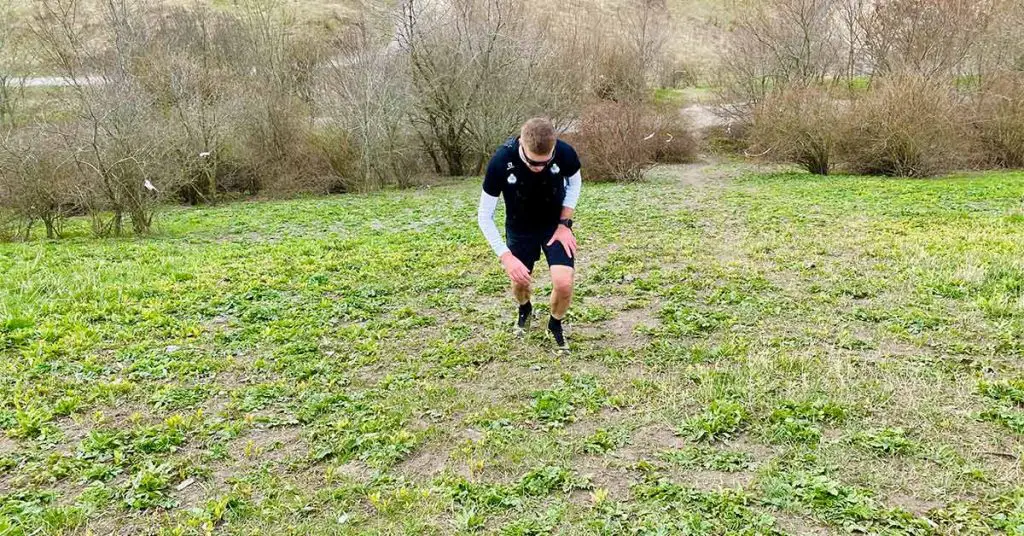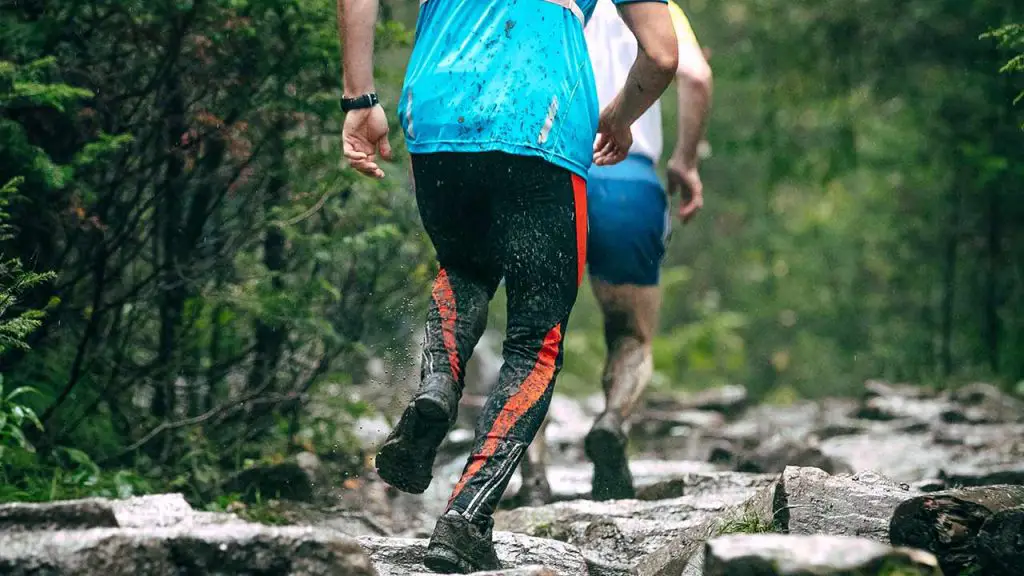Estimated read time: 4 minutes.
Yes, it can be harder to run on trails. The uneven surface and unpredictable terrain make it more challenging to maintain your balance, leading to a slower pace or even tripping. However, running on trails also has many benefits that you won’t find on the pavement. The softer surface is kinder to your knees and feet, and the scenery is an excellent distraction from the monotony of running on a track or road. So, while it may be harder to run on trails, the benefits make it well worth it! In this blog post, we will explore the pros and cons of both types of running and let you decide which is better for you!
When it comes to running on trails, there are a few things you need to consider. Firstly, the terrain can be more uneven than pavement, so your footing may not be as stable. This can lead to an increased risk of ankle sprains and other injuries. Additionally, trails tend to be more hilly than flat roads, so you may have to do more uphill running. This can be challenging for some runners, especially if they are not used to it.
However, trails also offer several benefits that runners may not find on the pavement. For starters, the softer surface of trails is easier on your joints than hard concrete. In addition, trails provide a more scenic running experience, with trees and other natural obstacles to navigate. This can be a fun change of pace from the monotony of running on a straight road. (Whats a good trail running pace? Read more here). Ultimately, the decision of whether or not to run on trails comes down to personal preference. If you are looking for a more challenging workout, trails may be right for you.
Is Running on Trails Slower?
Yes, on average, running on trails is slower because of the uneven surface and obstacles. However, this largely depends on the type of trail and the surface condition. For example, if you are running on a well-maintained dirt trail, your speed may be comparable to running on pavement. However, if you are running on an uneven or rocky trail, your pace may be slower due to the increased risk of injury.
Trail running could also be slower due to the scenery. If you are running on a trail that meanders through a park or forest, you may be tempted to stop and take in the view. This can definitely add time to your run!
We could agree that Trail running is more of an adventure. You never really know what to expect with all the ups and downs, twists and turns. This can make running on trails more challenging, but it also makes it more interesting.
Is Trail Running High Impact?
Trail running can be high impact depending on the surface you are running on. If you are running on a dirt trail, the impact will be less than running on pavement. However, if you are running on a rocky trail, the impact may be greater due to the uneven terrain.
But Trail running is also a great way to reduce the impact on your body. The softer surface of trails is much easier on your knees and feet than concrete or asphalt so that you may experience less pain and fatigue after a long run.
Trail Running vs Road Running Body Type
Trail runners get a more muscular body type because they use more energy running on trails. When you run on trails, your whole body has to work harder to maintain balance and navigate the terrain. Muscles that work to keep you upright, such as your quads and glutes, will become more developed. You will also strengthen your calves, as they are constantly working to keep you from slipping on the rocks and roots.
Roadrunners, on the other hand, typically have a leaner body type. When you run on a road, your body is in a more linear position and only uses the muscles needed to propel you forward. This can lead to less muscle development overall.
However, this does not say that road runners cannot excel at trail running. It simply depends on the person’s natural abilities and how they adapt to the new terrain. Ultimately, it is up to the individual runner to decide which type of running is better for them.
Conclusion
So, is it harder to run on trails? It depends on the runner’s preferences and abilities. Trail running provides you with a more challenging workout, but it also can be slower because of the uneven terrain and scenery.
Trail running could also be slower due to the scenery. If you are running on a trail that meanders through a park or forest, you may be tempted to stop and take in the view. This can definitely add time to your run!
The benefits of trail running are the softer surface, which is easier on your joints than hard concrete or pavement; however, this largely depends on running on dirt or rocks.
Ultimately, whether or not you choose to run trails comes down to personal preference, as either type of runner can excel at any kind of running depending on their natural abilities and what they find most enjoyable.
Do you have a preference between running on trails or roads? Share in the comments below!
- How Many Laps Around a Track is a 5K: Your Guide - October 22, 2023
- When is Track and Field Season? - October 22, 2023
- Understanding the Length: How Long Is a Running Track? - October 22, 2023



